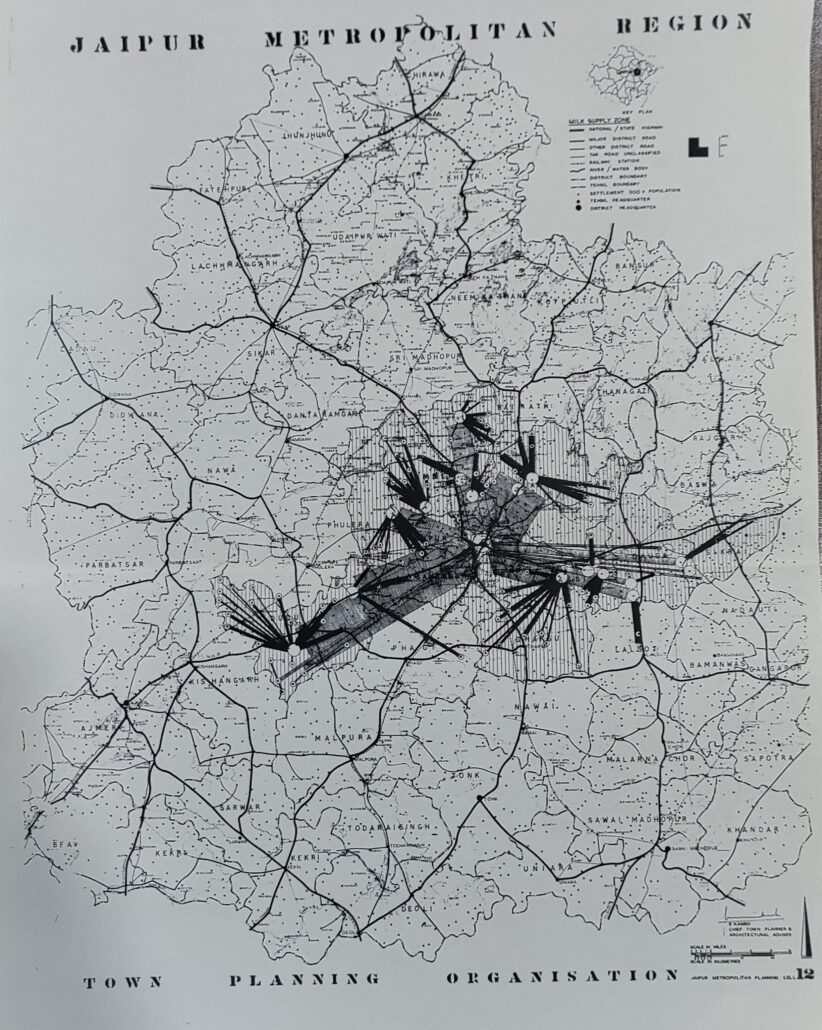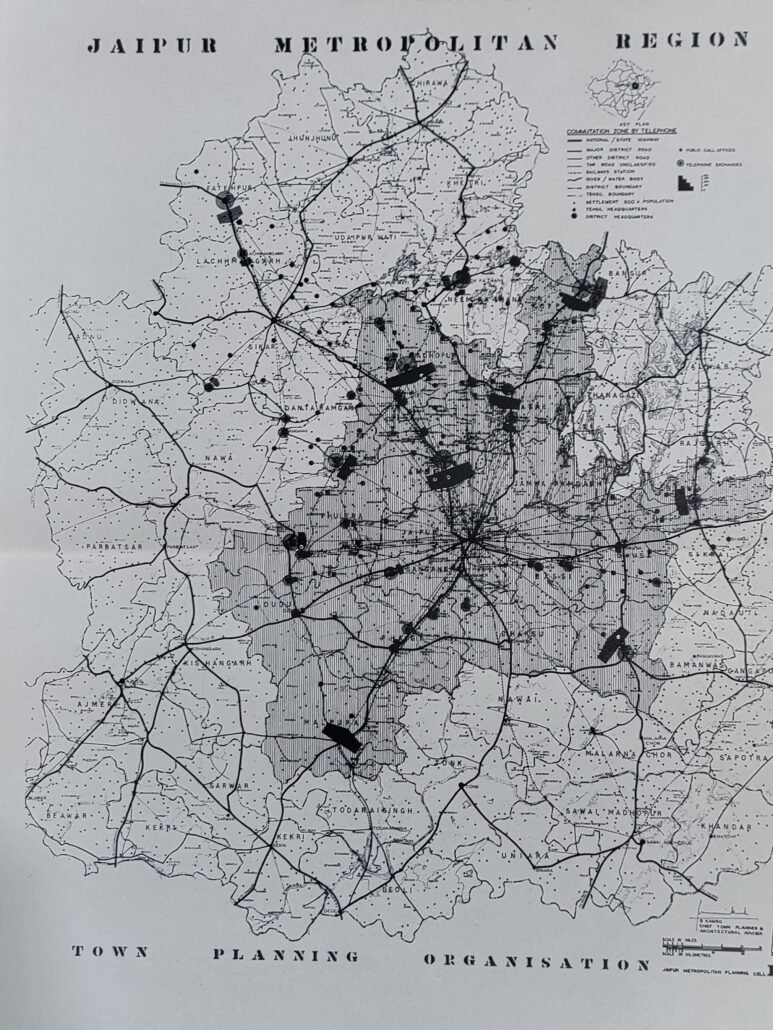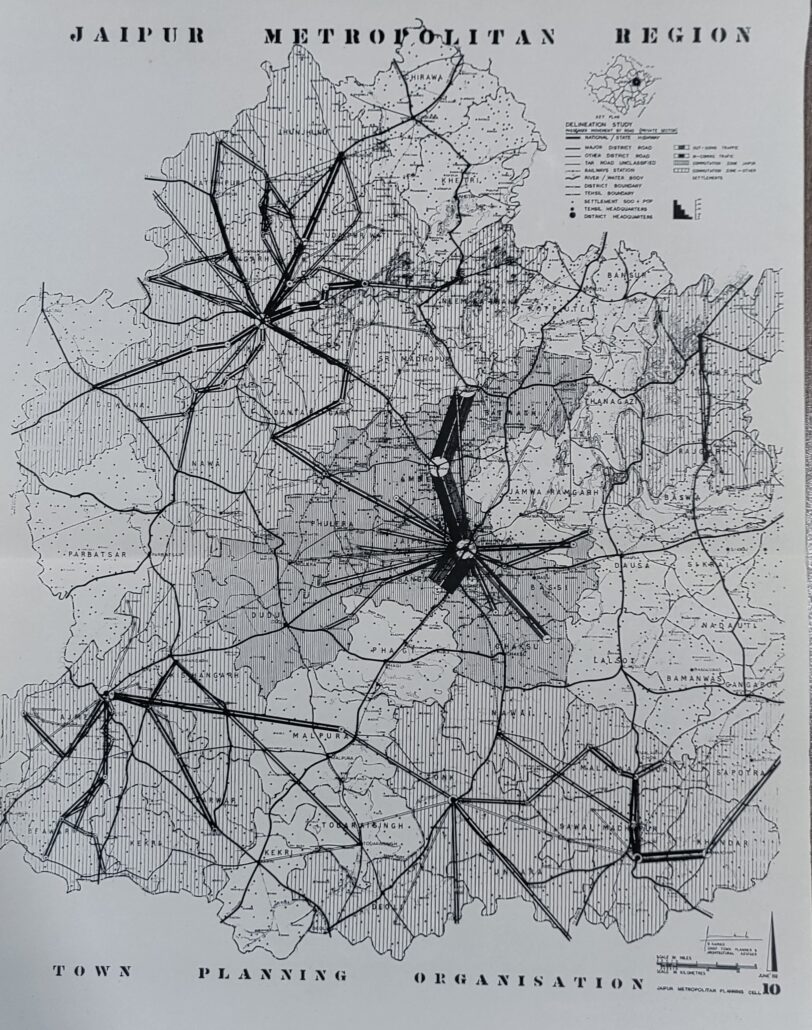- FORUM
- PROJECTS
- ABOUT US
- RESOURCES
- CONTACT US
- FORUM
- PROJECTS
- ABOUT US
- RESOURCES
- CONTACT US
Urban Settlement System – A Study Jaipur Metropolitan Region 2001 A.D.
by B. KAMBO
1. Emerging Urban Pattern
This first part of the study attempts to explain the play of forces which have created circumstances for carrying out this exercise as well as to set the Goals, Scope and Geographical context of the exercise.
Emerging Urban Pattern in Rajasthan presents a picture familiar to that of any developing country. In absolute terms it is characterised by a high rate of growth- 2.74% per annum
compared to the national average of 2.44% per annum. In terms of distribution of urban sector, it is represented by few nodes of high degree of concentration along with a large number of nodes with low to very low degree of population concentration.
Out of this the State Capital may, due to its continuously increasing share, contain about 33% equivalent to about 2.8 million.
If the prevailing circumstances are any indicators of the future, the situation may become quite chaotic and even may go out of hand.
The limited availability of water as a resource is a special feature of the State of Rajasthan. In case of Jaipur the system is already under severe strain due to the extremely
limited availability of water sources base. Since according to a vailable understanding, there are no indicators of getting additional water sources bases, the situation in future with the addition of about 18 million people, may become even more hopeless.
If the real estate market is any indicator of the future-the competition, which is a result of excessive concentration, might force most of the people out of market and they may have to stay at far away distances bringing in social tensions, transport problems and the like.
The existing traffic chaos faced today by one million population of Jaipur would become much more acute with further reduced chances of solution.
The supply zone of various services approximately remaining the same, there may not be appreciable increase in the total supply, leading to unprecedent price rise.
The tendency of population to agglomerate in existing developed areas-while considerable increasing density of these areas, often works beyond the assigned capacities of infra
structure. Since the infrastructure is not something which can be upgraded incrementally, the whole system gets distorted.
This tendency of agglomerating beyond the holding capacity
brings many other ills as well particularly deterioration in environmental quality. Old city of Jaipur is a superb example of such deterioration. If all these observations are put together, Urban Rajasthan may encounter a serious apprehension suggesting that if appropriate steps are not taken now, the future of Jaipur may be very dark with reduced chances of any remedy. Taking into account, all these serious apprehensions, it was thought that as a preventive action, serious efforts should be made to at least divert to some other settlements a part of the future urban population that might otherwise agglomerate at Jaipur. It is in this context that this study had been undertaken by a special team in the State Town Planning Department. Consequently the Objectives of this study that have emerged are the following :
1. Assess the urban population of Rajasthan by 2001 A.D.
2. Assess the urban situation that Jaipur might face by the end of this Century if present trends are allowed to continue.
3 Assess the causes and sources of population agglomeration.
4. Assess the urban size of Jaipur by 2001 A.D.
5. Assess the population that could be diverted to other settlements.
6. Identify the settlements where the surplus population could be diverted.
7. Assign the population and activities to the identified urban settlements
8. Evolve a Development Plan for the identified settlements.
9. Work out the Financial, Institutional and Administrative implications of the Plan.
10. Work out a methodology and Programme of implementation.
As would be evident from the Objectives of this study, many other facts e.g. Land Use Plan, Agricultural and Industrial Sector Plan, Transport Plan, Rural Growth Centre Plan etc., generally associated with the preparation of the Regional Plans have been consciously left out. This study presents an exercise directed towards recasting of the upper tier urban settlement pattern. Looking to the task envisaged in the terms and conditions and availability of limited resources, it was decided to divide the project in two parts. The first part of the study presents a discussion on the For the remaining first seven items of the terms of reference.



for more detail download …
 Urban Settlement System – A Study Jaipur Metropolitan Region 2001 A.D. by B. KAMBO.pdf
Urban Settlement System – A Study Jaipur Metropolitan Region 2001 A.D. by B. KAMBO.pdf